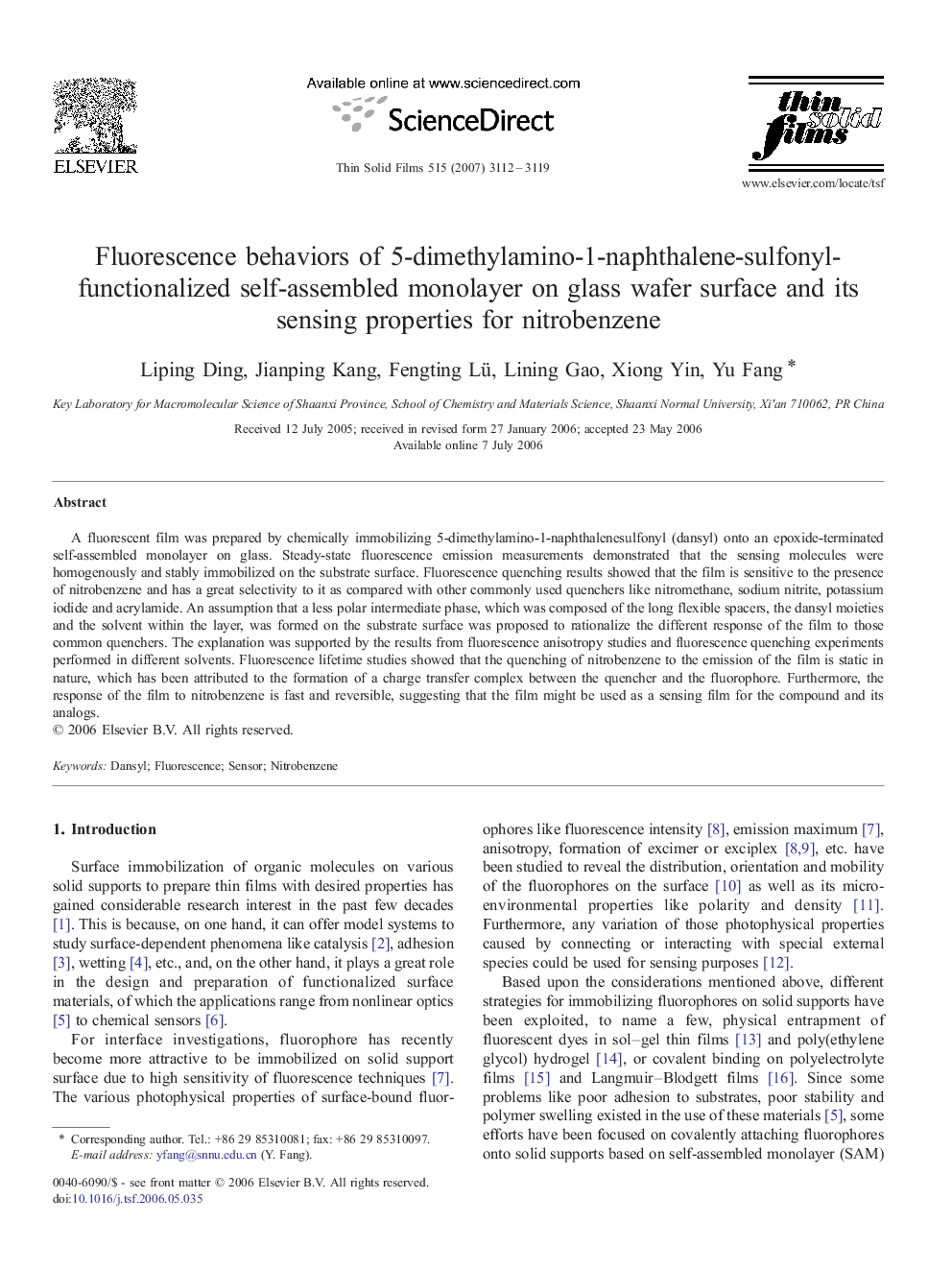| Article ID | Journal | Published Year | Pages | File Type |
|---|---|---|---|---|
| 1674732 | Thin Solid Films | 2007 | 8 Pages |
A fluorescent film was prepared by chemically immobilizing 5-dimethylamino-1-naphthalenesulfonyl (dansyl) onto an epoxide-terminated self-assembled monolayer on glass. Steady-state fluorescence emission measurements demonstrated that the sensing molecules were homogenously and stably immobilized on the substrate surface. Fluorescence quenching results showed that the film is sensitive to the presence of nitrobenzene and has a great selectivity to it as compared with other commonly used quenchers like nitromethane, sodium nitrite, potassium iodide and acrylamide. An assumption that a less polar intermediate phase, which was composed of the long flexible spacers, the dansyl moieties and the solvent within the layer, was formed on the substrate surface was proposed to rationalize the different response of the film to those common quenchers. The explanation was supported by the results from fluorescence anisotropy studies and fluorescence quenching experiments performed in different solvents. Fluorescence lifetime studies showed that the quenching of nitrobenzene to the emission of the film is static in nature, which has been attributed to the formation of a charge transfer complex between the quencher and the fluorophore. Furthermore, the response of the film to nitrobenzene is fast and reversible, suggesting that the film might be used as a sensing film for the compound and its analogs.
